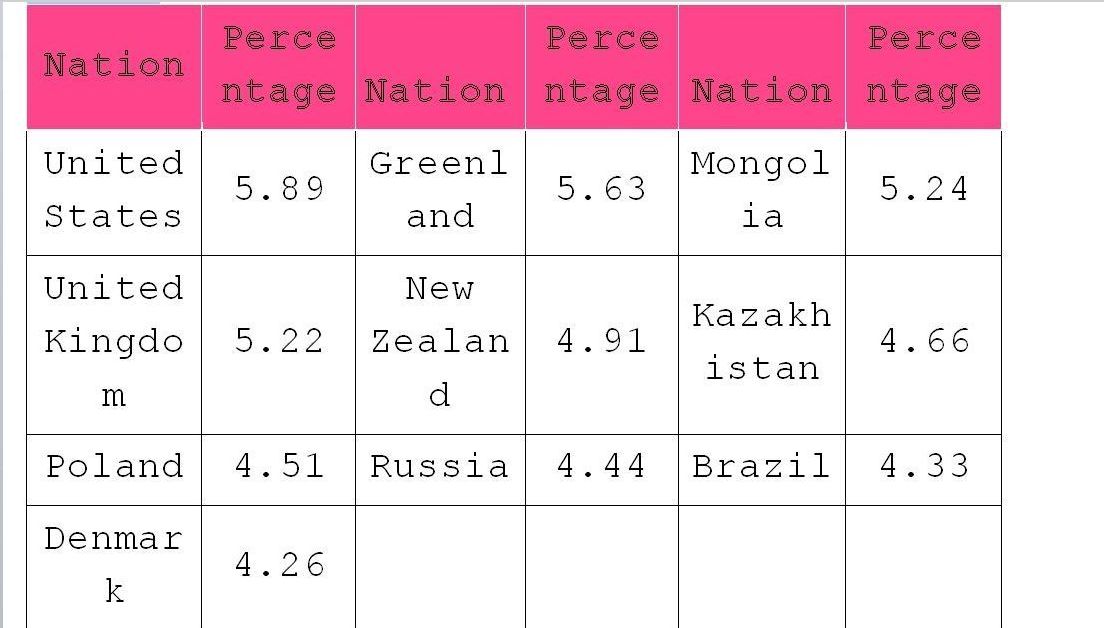Despite stringent drug policies and punitive laws even the most advanced countries face high levels of lifetime drug abuse. According to the World Drug Report released at Vienna on 25/6/2021 by The United Nations’ Office on Drug and Crimes, around 275 million people used drugs worldwide in 2020 while over 36 million people suffered from drug use disorders.
The figures for similar events released on 25/6/2020 were around 269 million which is 30 percent more than in 2009 and over 35 million people for 2018.
The following nations had the largest share of people with a substance use disorder in 2019:-
Print, electronic and digital media flash often the news regarding the onslaught of illegal use of drugs, or abusing opioid or substance abuse commonly called drug abuse. Their misuse or non-medical use, prolonged use, abuse, use sans medical guidance can culminate in opioid dependence and various other health hazards.
In biochemistry opioid is a compound that resembles opium in addictive properties or abnormal physiological effects. It is a class of drugs naturally found in poppy plant. It includes compounds that are extracted from its seed as well as synthetic and semi-synthetic compounds with similar properties that can affect the brain.
They relax the body and relieve the pain for they act as powerful pain killers. Some prescription opioids are made directly from the plant while others are made by the scientists in the laboratories. The symptoms of substance abuse can be behavioural, psychological, physical, emotional, or mental.
The causes may be genetic predisposition to addiction or abuse, childhood trauma, poor social skills, lack of social support structure, the belief that drug abuse is not bad, neglect or peer pressure. It can include substances that are not drugs at all.
For containing chemicals they are used as medicine too. Indication of addiction is being unable to stop its use or unable to adhere to the prescribed dose. The terms drug abuse and misuse are often used interchangeably though there is a distinct difference. The Food and Drug Administration (FDA) clarifies that difference between misuse and abuse has to do with the individual’s intentions and motivations.
The FDA lays that both abuse and misuse of prescription drugs can be harmful or even life threatening. According to Institute for Safe Medication Practices prescription drug misuse can include taking the dose at a wrong time, stopping medicine too soon, taking incorrect dose or forgetting to take a dose. Substance abuse also means use of illegal drugs or the use of prescription or the over-the-counter (OTC) drugs or alcohol for the purpose other than those for which they are meant to be used or in excessive quantity.
Misuse of prescription drugs is taking a medicine or medication in a manner or dose other than prescribed, taking someone else’s prescription even if for a legitimate medical complaint like pain or to excite oneself. OTC drugs are the medicines which are sold directly to a consumer without requirement for a prescription from a health care professional as opposed to prescription drugs which are to be sold only to the consumers presenting a valid prescription.
The addiction develops unconsciously and surreptitiously among the vulnerable group, generally in youth. The illegal or excessive use starts with simple experimentation characterised by practice of regular use followed by problematic or risky use leading to dependence without fail turning ultimately to addiction in nutshell.
This menace is on the rise in Jammu and Kashmir also. In 2019, The National Drug Dependence Treatment Centre of All India Institute of Medical Sciences, New Delhi submitted its report on “Magnitude of substance abuse in India”. The first of its kind sponsored by Ministry of Social Justice & Empowerment gave state-wise estimates of the prevalence of drug abuse, measured through household survey among general population and respondent–driven sampling studying legal and the illegal substance use and abuse.
It reported that 4.9 percent of population of JK which worked out to over six lakh individuals (as per census 2011) was abusing opioid derivate drugs including doda, phukhi, poppy, hush, heroin, brown sugar, smack and pharmaceutical opioids. Health officials considered even this alarming rate as an underestimate. J&K stood at number five while the neighbouring state of Punjab topped the list. The report further disclosed that J&K had 25,098 people abusing drugs through injections exposing them to high risk of infections such as Hepatitis B and HIV.
UNODC estimated that during 2020 globally over 11 million people injected drugs half of whom lived with Hepatitis ‘C’. Certainly everything has its good or bad side. The human beings, who introspect, are in a perpetual state of examination in life. A match stick may be used to dispel darkness or to ablaze a shelter.
Similarly dynamite may be used for carving roads and tunnels across rocky terrains or directed towards populations. A need arises for a state based holistic survey to assess the exact extent and nature of abuse in J&K. We need to have a solid data base to implement the State Drug De-Addiction Policy in a better way.
There are effective treatment interventions for opioid dependence that can decrease the risk of overdose yet less than 10 percent of people who require such treatment are receiving it. Constricting easy supply is also among the remedial measures.
Understanding the causes for drug abuse can help policy makers to develop strategies to respond to illicit drug use. The Drug Addiction Treatment Act 2000 allows individual practitioners to administer narcotic controlled substances in Schedule III to V for the purpose of narcotic addiction treatment outside of an opioid treatment practice.
The author is a former Sr. Audit Officer and Consultant in the A.G’s Office Srinagar.
Disclaimer: The views and opinions expressed in this article are the personal opinions of the author.
The facts, analysis, assumptions and perspective appearing in the article do not reflect the views of GK.








